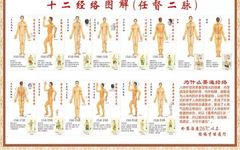The interconnected and interwoven structure forms a powerful meridian system. The meridian system is mainly divided into six parts: the twelve primary meridians, the twelve divergent meridians, the eight extraordinary vessels, the twelve sinew channels, and the twelve cutaneous regions. Among these, the twelve primary meridians, twelve divergent meridians, eight extraordinary vessels, and fifteen collaterals are the main meridians, while the twelve sinew channels and twelve cutaneous regions are extensions of the meridians.
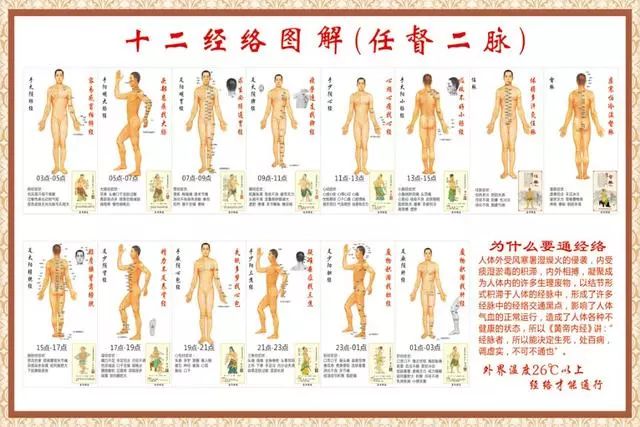
(1) Twelve Primary Meridians
The twelve primary meridians are the main body of the meridian system, internally connected to the five zang organs and six fu organs, and externally distributed throughout the body, having both internal and external pathways. The specifics are as follows:
① External Pathways of the Meridians. Based on the different locations of the external pathways, the meridians can be divided into those running through the head and trunk and those running through the limbs.
The pathways of the meridians running through the head and trunk are as follows: the Taiyin meridian of the hand (Shou Taiyin) is located on the outer side of the upper chest, the Shaoyin meridian of the hand (Shou Shaoyin) is located below the brain, and the Jueyin meridian of the hand (Shou Jueyin) is near the breast; the Yangming meridian of the hand (Shou Yangming) is located at the front of the shoulder, neck, lower teeth, and beside the nose, the Taiyang meridian of the hand (Shou Taiyang) is located at the scapula, neck, and in front of the ears, and the Shaoyang meridian of the hand (Shou Shaoyang) is located at the shoulder, neck, behind the ears, and at the brow; the Taiyin meridian of the foot (Zu Taiyin) is located at the third lateral line of the chest and abdomen, the Shaoyin meridian of the foot (Zu Shaoyin) is at the first lateral line of the chest and abdomen, and the Jueyin meridian of the foot (Zu Jueyin) is located at the hypochondrium and genital area; the Yangming meridian of the foot (Zu Yangming) is located below the eyes, around the face, at the front of the neck, and at the second lateral line of the chest and abdomen, the Taiyang meridian of the foot (Zu Taiyang) is located at the inner canthus, the first lateral line of the head, at the back of the neck, and at the first and second lateral lines of the lower back, and the Shaoyang meridian of the foot (Zu Shaoyang) is located at the outer canthus, the temporal region, the side of the neck, and the side of the waist.
The pathways of the meridians running through the limbs are as follows (with the position described as the big toe in front and the little finger behind): the Taiyin meridian of the hand (Shou Taiyin) runs from the inner side of the upper limb to the radial side of the thumb, the Shaoyin meridian of the hand (Shou Shaoyin) runs from the inner side of the upper limb to the radial side of the little finger, and the Jueyin meridian of the hand (Shou Jueyin) runs from the middle of the inner side of the upper limb to the radial side of the middle finger; the Yangming meridian of the hand (Shou Yangming) runs from the side of the index finger to the front edge of the outer side of the upper limb, the Taiyang meridian of the hand (Shou Taiyang) runs from the ulnar side of the little finger to the back edge of the outer side of the upper limb, and the Shaoyang meridian of the hand (Shou Shaoyang) runs from the ulnar side of the ring finger to the middle of the outer side of the upper limb; the Taiyin meridian of the foot (Zu Taiyin) runs from the inner side of the big toe to the central front edge of the inner side of the lower limb, the Shaoyin meridian of the foot (Zu Shaoyin) runs from the little toe and the sole to the back edge of the inner side of the lower limb, and the Jueyin meridian of the foot (Zu Jueyin) runs from the outer side of the big toe to the front edge of the inner side of the lower limb; the Yangming meridian of the foot (Zu Yangming) runs from the front edge of the outer side of the lower limb to the side of the index toe, the Taiyang meridian of the foot (Zu Taiyang) runs from the back edge of the outer side of the lower limb to the outer side of the little toe, and the Shaoyang meridian of the foot (Zu Shaoyang) runs from the middle of the outer side of the lower limb to the outer side of the penultimate toe.
② Internal Pathways of the Meridians. The internal pathways of the meridians belong to the five zang organs and six fu organs, and can be divided into the following types: the three yin meridians of the hand, the three yang meridians of the hand, the three yang meridians of the foot, and the three yin meridians of the foot.
The three yin meridians of the hand are: the Taiyin Lung Meridian (Shou Taiyin Fei Jing, belonging to the Lung, connecting to the Large Intestine), the Shaoyin Heart Meridian (Shou Shaoyin Xin Jing, belonging to the Heart, connecting to the Small Intestine), and the Jueyin Pericardium Meridian (Shou Jueyin Xin Bao Jing, belonging to the Pericardium, connecting to the Sanjiao);
The three yang meridians of the hand are: the Yangming Large Intestine Meridian (Shou Yangming Da Chang Jing, belonging to the Large Intestine, connecting to the Lung), the Taiyang Small Intestine Meridian (Shou Taiyang Xiao Chang Jing, belonging to the Small Intestine, connecting to the Heart), and the Shaoyang Sanjiao Meridian (Shou Shaoyang San Jiao Jing, belonging to the Sanjiao, connecting to the Pericardium);
The three yin meridians of the foot are: the Taiyin Spleen Meridian (Zu Taiyin Pi Jing, belonging to the Spleen, connecting to the Stomach), the Shaoyin Kidney Meridian (Zu Shaoyin Shen Jing, belonging to the Kidney, connecting to the Bladder and Heart), and the Jueyin Liver Meridian (Zu Jueyin Gan Jing, belonging to the Liver, connecting to the Gallbladder);
The three yang meridians of the foot are: the Yangming Stomach Meridian (Zu Yangming Wei Jing, belonging to the Stomach, connecting to the Spleen), the Taiyang Bladder Meridian (Zu Taiyang Pang Guang Jing, belonging to the Bladder, connecting to the Kidney and Brain), and the Shaoyang Gallbladder Meridian (Zu Shaoyang Dan Jing, belonging to the Gallbladder, connecting to the Liver).
③ Relationship Between Interior and Exterior. The relationship between interior and exterior has two meanings: one is the correspondence between the yin meridians (interior) and the yang meridians (exterior), and the other is that the functions of the human body are interconnected internally and externally. The meridians connect yin and yang, forming the following relationships: the Taiyin of the hand connects with the Yangming of the hand, the Shaoyin of the hand connects with the Taiyang of the hand, the Jueyin of the hand connects with the Shaoyang of the hand, the Shaoyin of the foot connects with the Taiyang of the foot, the Jueyin of the foot connects with the Shaoyang of the foot, and the Taiyin of the foot connects with the Yangming of the foot.
④ Flow and Sequence of the Meridians. According to the flow and sequence, the order of the twelve primary meridians is as follows: Taiyin (Lung), Yangming (Large Intestine), Yangming (Stomach), Taiyin (Spleen), Shaoyin (Heart), Taiyang (Small Intestine), Taiyang (Bladder), Shaoyin (Kidney), Jueyin (Pericardium), Shaoyang (Sanjiao), Shaoyang (Gallbladder), Jueyin (Liver).
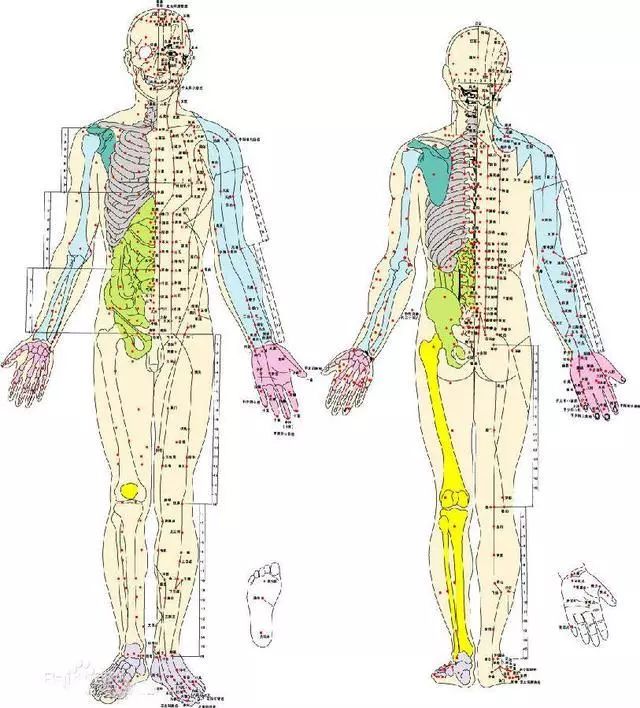
(2) Twelve Divergent Meridians
The twelve divergent meridians are branches of the twelve primary meridians, totaling twelve divergent meridians, with the three yin and three yang of the hands and feet forming six pairs, known as the Six Harmonies. Among these, the Yangming of the hand and the Taiyin of the hand form the Yangming of the hand, the Shaoyang of the hand and the Jueyin of the hand form the Shaoyang of the hand, the Taiyang of the hand and the Shaoyin of the hand form the Taiyang of the hand, the Taiyang of the foot and the Shaoyin of the foot form the Taiyang of the foot, the Shaoyang of the foot and the Jueyin of the foot form the Shaoyang of the foot, and the Yangming of the foot and the Taiyin of the foot form the Yangming of the foot.
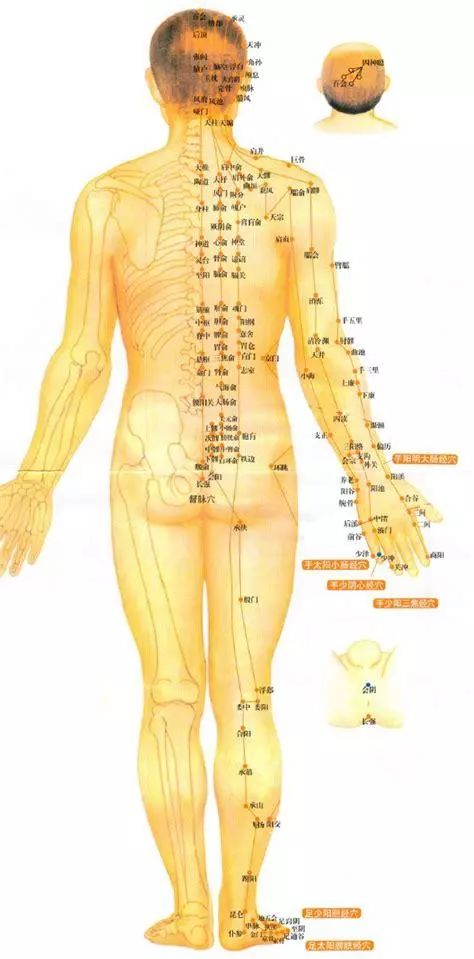
(3) Eight Extraordinary Vessels
The eight extraordinary vessels are distributed in a crisscross manner with the twelve primary meridians. The eight extraordinary vessels include the following: the Du Mai (Governing Vessel) located along the posterior midline, the Ren Mai (Conception Vessel) located along the anterior midline, the Yin Qiao Mai (Yin Heel Vessel) located along the first lateral line of the abdomen, the Yang Qiao Mai (Yang Heel Vessel) located along the waist side, the Yang Wei Mai (Yang Linking Vessel) located on the outer side of the head, shoulder, and lower limbs, the Yin Wei Mai (Yin Linking Vessel) located on the inner side of the eyes and lower limbs, the Yang Qiao Mai (Yang Heel Vessel) located on the outer side of the head, neck, shoulder, and lower limbs, and the Yin Wei Mai (Yin Linking Vessel) located along the third lateral line of the neck, abdomen, and inner side of the lower limbs.
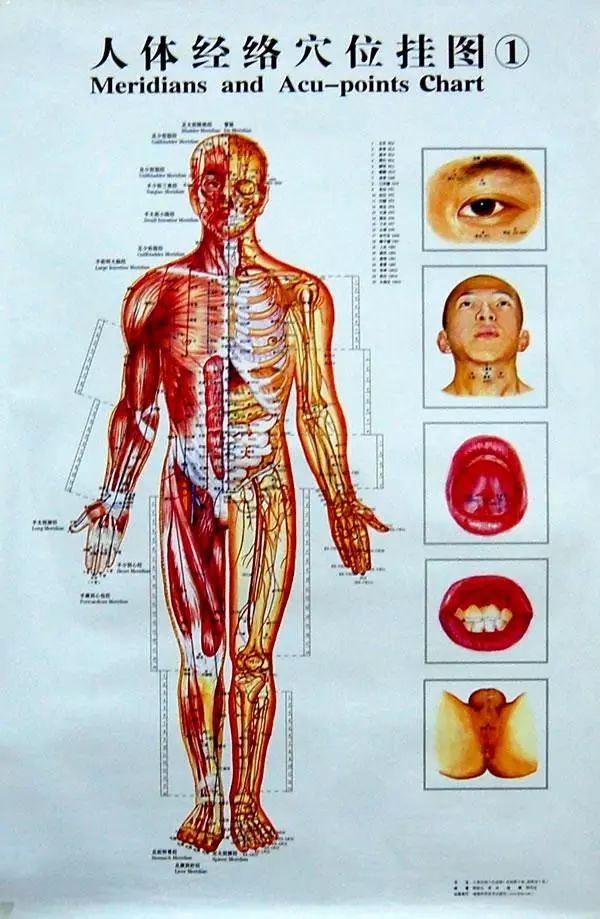
(4) Fifteen Collaterals
The fifteen collaterals are mainly composed of the branches of the twelve primary meridians in the limbs, along with the Ren Mai (Conception Vessel) collateral, the Du Mai (Governing Vessel) collateral, and the Great Spleen collateral. The specifics are as follows: the collaterals of the Taiyin of the hand, the collaterals of the Shaoyin of the hand, the collaterals of the Jueyin of the hand, the collaterals of the Yangming of the hand, the collaterals of the Taiyang of the hand, the collaterals of the Shaoyang of the hand, the collaterals of the Taiyin of the foot, the collaterals of the Shaoyin of the foot, the collaterals of the Jueyin of the foot, the collaterals of the Yangming of the foot, the collaterals of the Taiyang of the foot, the collaterals of the Shaoyang of the foot, the collateral of the Ren Mai (Conception Vessel), the collateral of the Du Mai (Governing Vessel), and the Great Spleen collateral.
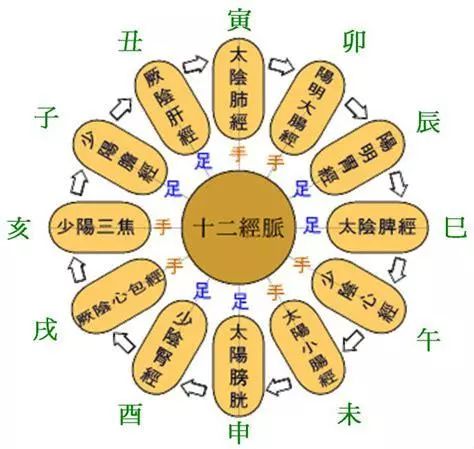
(5) Twelve Sinew Channels
The twelve sinew channels refer to the muscles of the human body classified according to their locations into the three yin and three yang of the hands and feet. The specifics are as follows: the sinew channel of the Taiyin of the hand, the sinew channel of the Shaoyin of the hand, the sinew channel of the Jueyin of the hand, the sinew channel of the Yangming of the hand, the sinew channel of the Taiyang of the hand, the sinew channel of the Shaoyang of the hand, the sinew channel of the Taiyin of the foot, the sinew channel of the Shaoyin of the foot, the sinew channel of the Jueyin of the foot, the sinew channel of the Yangming of the foot, the sinew channel of the Taiyang of the foot, and the sinew channel of the Shaoyang of the foot.
(6) Twelve Cutaneous Regions
The skin of the human body can be divided into twelve regions based on the distribution of the meridians, known as the twelve cutaneous regions. The twelve cutaneous regions can be grouped into six meridian cutaneous regions, specifically: the shoulder region, the elbow region, the wrist region, the hip region, the knee region, and the ankle region.
———- Separator Line ———-
If you like this article, follow our public account and share it with your friends,
Let’s learn TCM together!

Long press the QR code to follow
Disclaimer: The images and text are sourced from the internet, and the copyright belongs to the original authors. If there are any copyright issues with the reprint, please contact us for removal. The content mentioned in this article, including various prescriptions and acupuncture formulas, is for reference and learning purposes only and should not be used as prescriptions. Please do not use them blindly.

